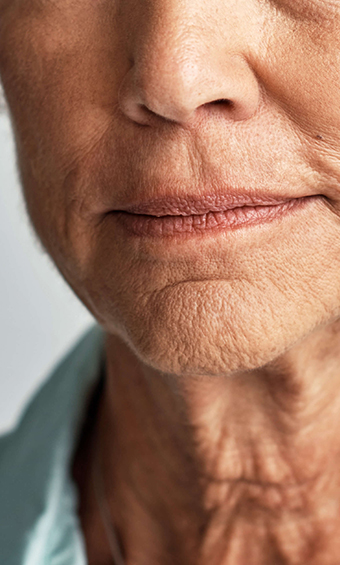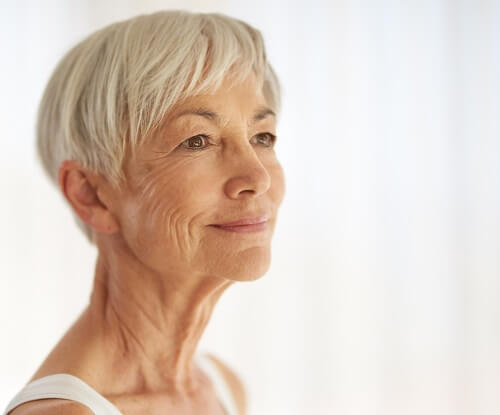ABOUT FACIAL AGEING
The ageing process affects everyone, causing us to look more tired, sad, saggy and angry. This appearance is due to the collective changes in all four layers of the face—the skin, muscle, subcutaneous fat and bone.
Skin
All the major constituents of the skin deteriorate with age.
The epidermis thickens, resulting in a dull appearance from a build up of dead skin cells. The dermis thins and with the resultant reduced support for surrounding blood vessels, facial redness increases.
The sun protection factor (SPF) of the skin diminishes and we develop accelerated sun damage (photoageing). This manifests as textural (dry and rough skin) and colour changes (red and brown discolouration).
There is a reduction in collagen, the main structural protein of the skin. Collagen loss is most marked in post-menopausal women, where a staggering 30% of their skin collagen thickness is lost within five years of the onset of menopause.
Elastin becomes denatured and the skin loses its elasticity as a result.
Fibroblasts produce less collagen and their pull on the collagen fibre network becomes weakened. This decrease in contractile force on the collagen network contributes to sagging.



Facial Muscles
Facial mimetic muscles attach directly to the deep surface of the skin. They contract in a coordinated manner to produce facial expressions. Repeated contractions of these muscles over decades results in deepening of wrinkles on the ageing skin.
Subcutaneous Fat
Facial fat is arranged into fat pads. The majority of these facial fat pads shrink with age. This, combined with other ageing changes, results in sagging, particularly around the jowl area, and wrinkle formation.
Facial Bones
Our facial skeleton consists of an intricate network of interconnecting bones. It is the shape of these bones that give rise to our individual appearance. Studies from all over the world have identified that facial bones change shape and become smaller with age. Our eye sockets enlarge and become more angular and our jaw bone shrinks.
It is important to bear in mind that the skin is the only layer that is visible and therefore the combined changes in all four layers manifest on the skin. It is these changes that make us look more tired, sad, saggy and angry.
Although facial ageing is progressive and cannot be stopped, a number of facial rejuvenation treatments can slow down or even reverse many of these signs.
Do You Have A Question?
Please complete the form below and we will be in touch ASAP.